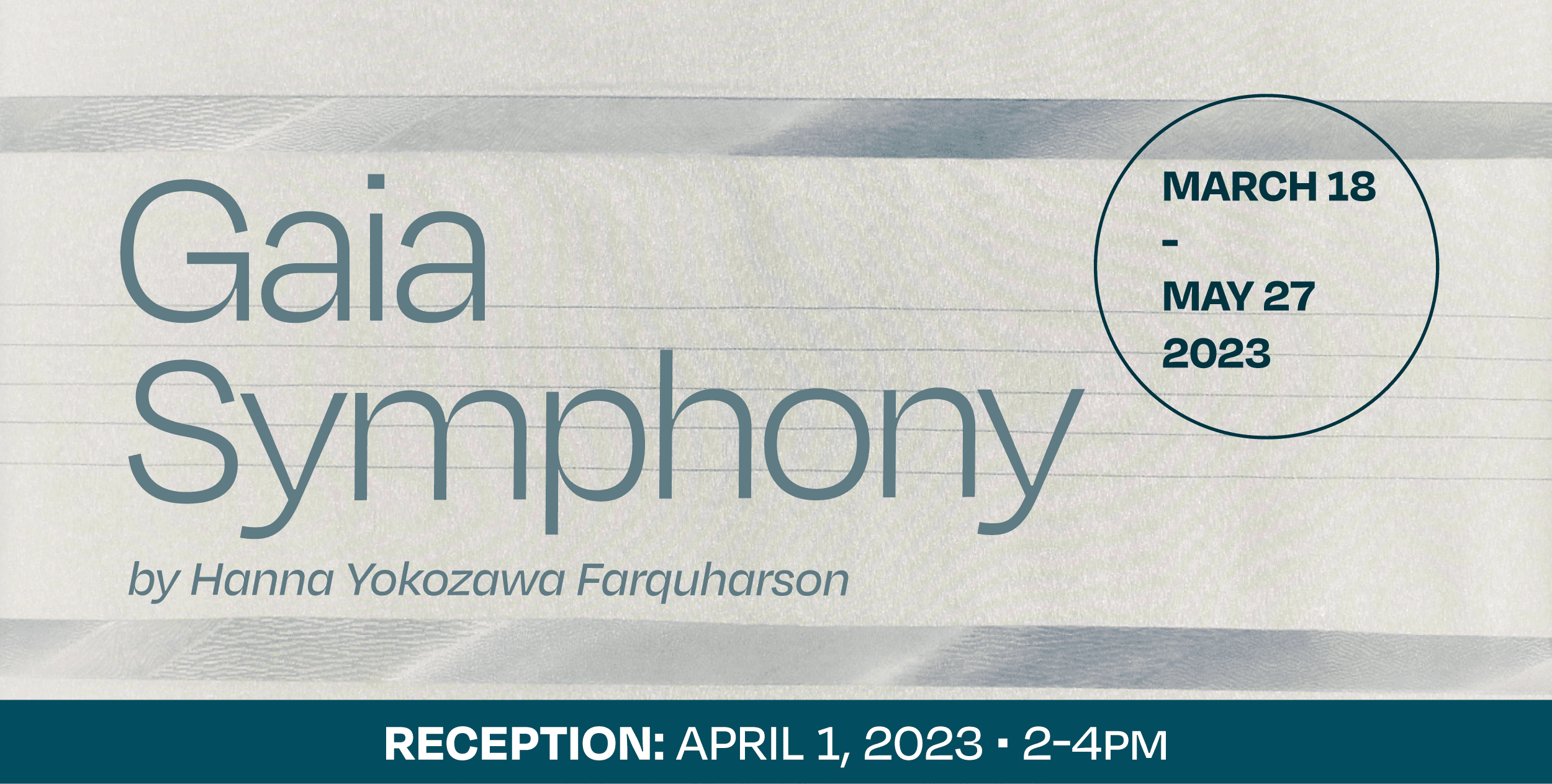Tell us a little about yourself.
I am Hanna Yokozawa Farquharson from Saltcoats, Treaty Four territory. I am a self-taught textile artist.
How do you think living in Saskatchewan affects your work? Do you find living in a small community also affects your work?
I believe that being close to the sounds, lights, birds, and animals of nature means that I am exposed to their purity and high consciousness in my daily life. Also, since I live by a lake, I believe that I am influenced by the purification and circulation of water. I think I am being healed daily.
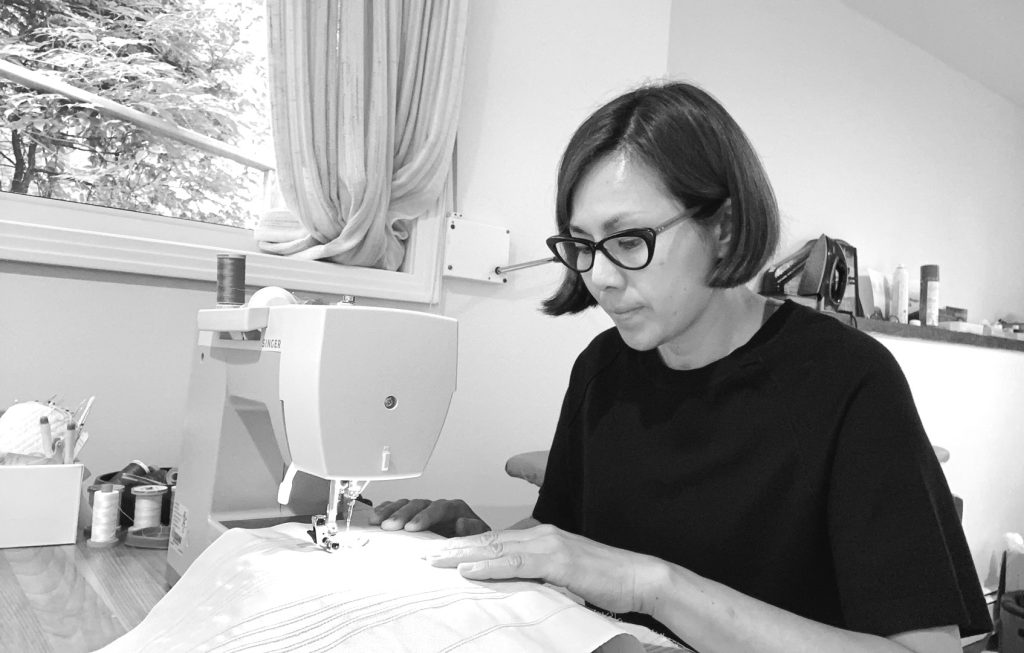
The artist in her studio.
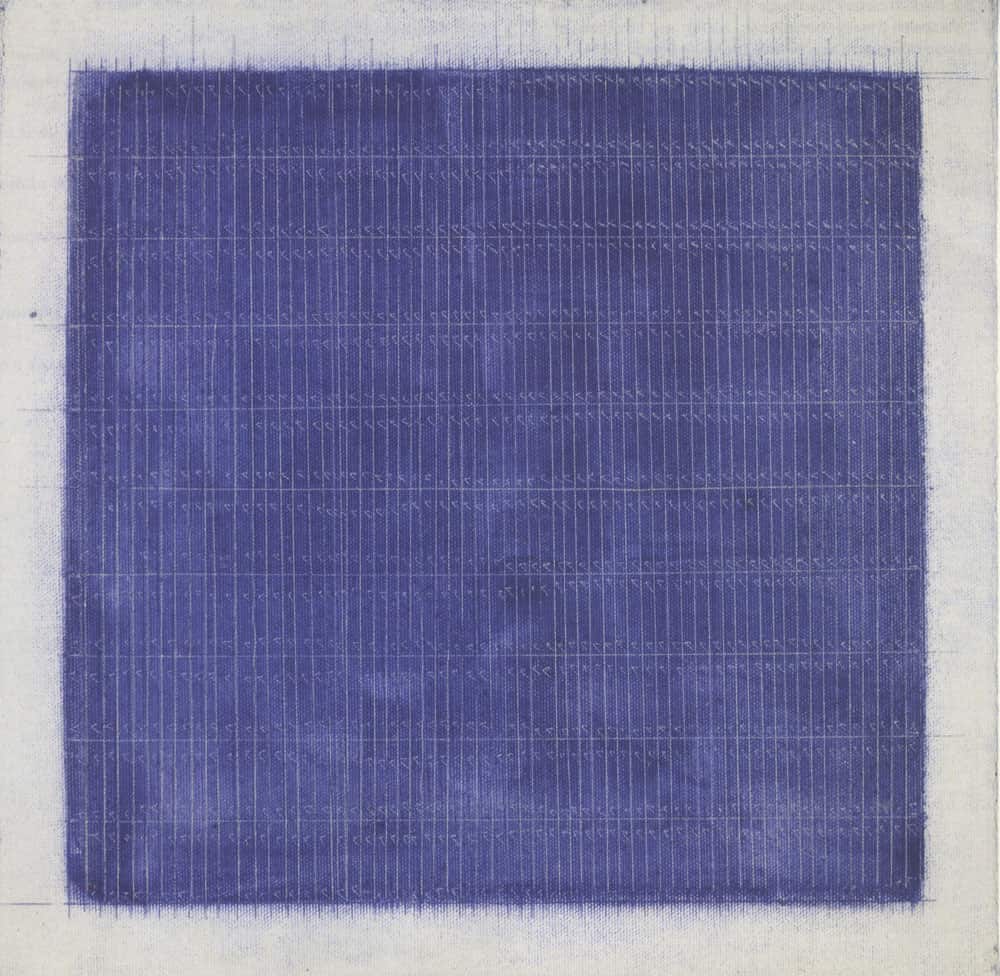
Agnes Martin, Untitled, 1960, oil on linen.
You have written about being inspired by the works of abstract expressionist Agnes Martin and ‘the grid’ – can you describe the importance of that relationship to you?
It all started when my mentor, Don Stein, introduced me to Agnes Martin— originally from Saskatchewan. As I learned more about her life and work through her books, I felt inspired to collaborate with her.
Many people have discussed the grid that Agnes depicts in her work, but I felt like no one had really gotten to the heart of it yet, and I felt like I was being asked to find out what it was.
She was born in Macklin, Saskatchewan, moved to British Columbia and went to the U.S., but during that time she had mental illness, learned TAO Buddhism, and devoted her life to making art on her own. In my early twenties, I became depressed and was in a world of mental darkness for about ten years. It was there that I encountered esoteric Buddhism and found light within my heart.
As for THE GRID, last fall I finally came to the conclusion that ”That’s what it is all about!” and I will tell you about it someday when the time is right.
The evolution of a maker is always one folks like to know about. Can you describe a little bit about how you evolved into the creator that you are now? Where you want to go next?
I found a very nice modern quilt online and wanted to make one. In 2016, I learned to make quilts by watching YouTube. After that, I stopped making quilts due to taking care of my family and the death of my mother.
But I knew I couldn’t go on like this, so I tried to enter the major juried shows in the U.S. and U.K., Quilt National in Canada, and some [quilts] were juried and one received a judge’s choice award, and made the short list for the Fine Art Quilt Masters category. It was 2018. That year I also curated and exhibited an Art Show at a local library with my friend.
The first gallery shows in Saskatchewan were an online gallery hosted by the Yorkton Arts Council, and a Local Artist Show at the Godfrey Dean Art Gallery in Yorkton in 2019. Some of my work was selected for a group show in the fall of that year at the GDAG, and from there my art world expanded little by little. I asked the SK Arts staff who came to the reception, “How can I become a professional artist?” He replied that I should do five things, so I tried them all.
In 2020, the GDAG gave me a great opportunity to do a solo show, so I put my all into it and completed about 50 pieces in 10 months.
Looking back, I think I learned a little bit more about how the art world works through the process of doing these five things, and I have been blessed with wonderful relationships and opportunities that have brought me to where I am today. I have nothing but gratitude.
I believe that my works will reach those who need them, and that’s how the future will go.
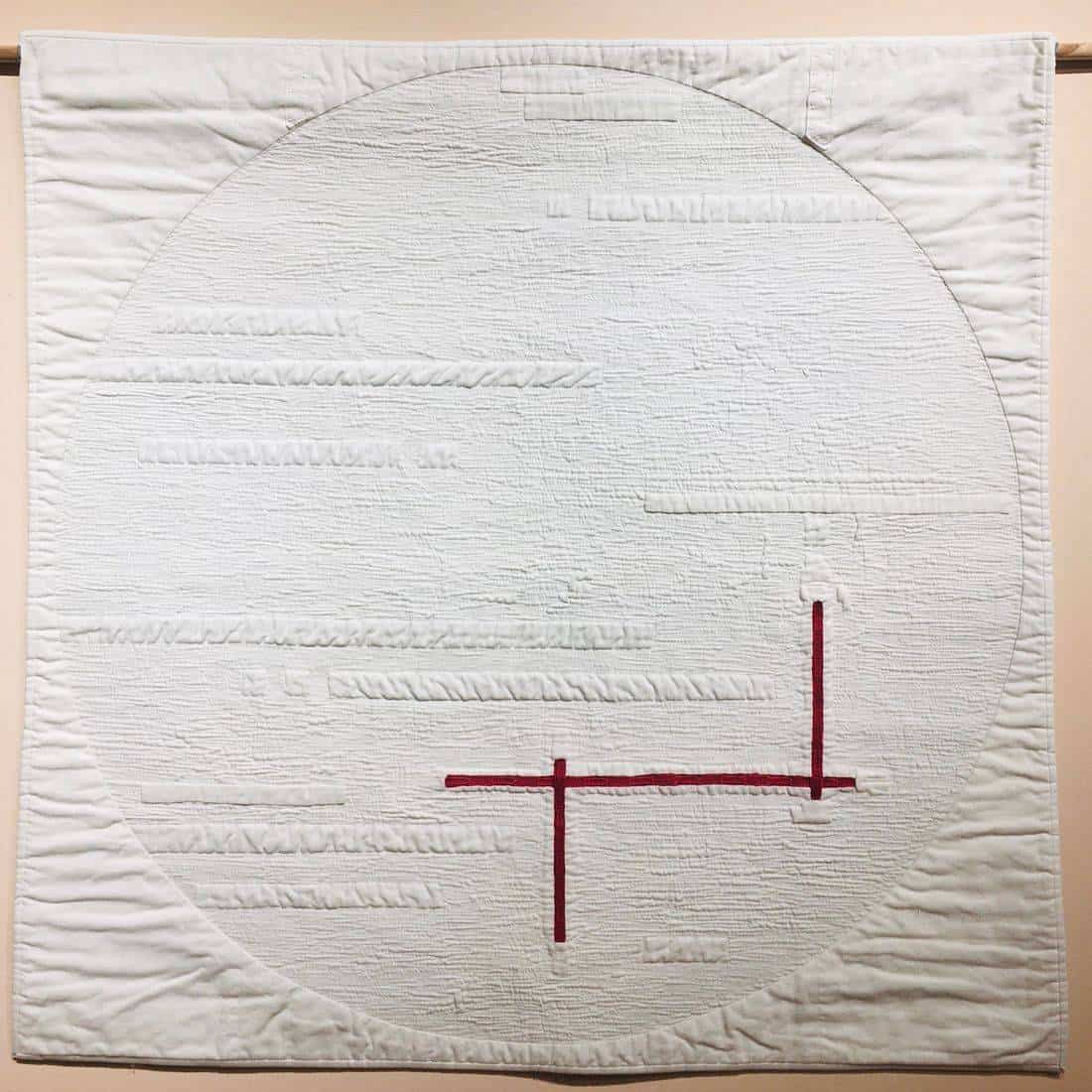
“Round Window” by Hanna Yokozawa Farquharson, 2017. Photograph by Don Stein.
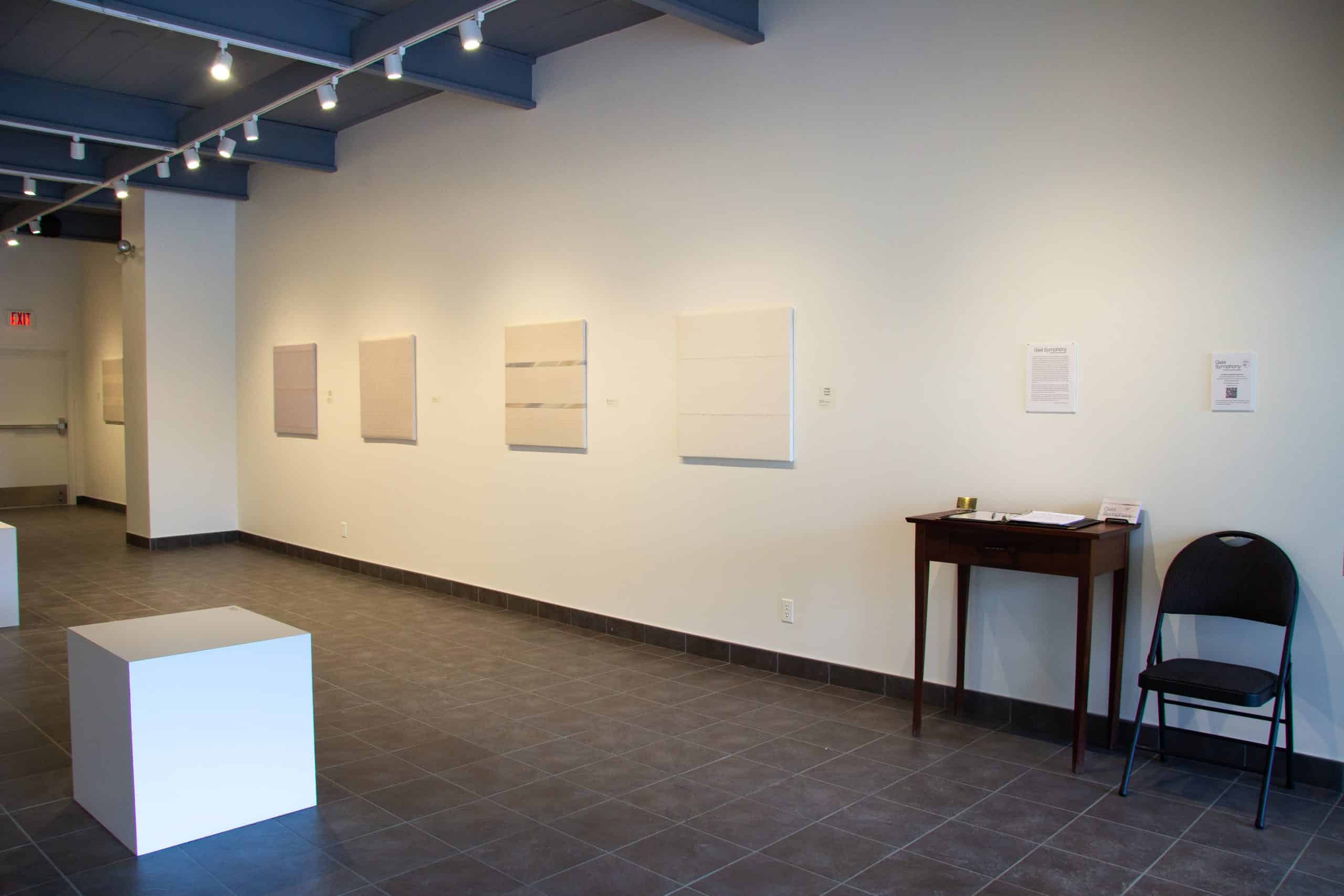
“Gaia Symphony” installed in SCC Gallery.
We understand from your artist statement that your cultural background and the practice of Shinto are very important to you. Can you describe how this influences your craft practice?
I suppose you could call it nature worship, the idea that all life is of equal value, that even the smallest animal, bird, or fish has a consciousness, feels pain, and has a heart.
There must have existed a world on earth long ago where all living creatures lived in harmony and symbiosis within nature, and I believe that we are now recalling the memories of that time. I believe it is my role to express that consciousness in a tangible form.
Using your family’s kimonos – a garment that lays on the body – and then creating these landscape-like abstractions is so interesting to me. How do you approach or consider the relationship between the land and the body?
What is put into the kimono is very important. The works displayed here are all made of silk. Silk threads are spun only after the cocoons have been in hot water and the silkworms die. The silk threads are the very life itself, and until they are completed as a kimono, they contain fresh air, delicious water, and the sincerity of the craftsmen in Japan.
The cycle of life is contained in this work. Our bodies, our lives, and the earth are born and die, and this cycle repeats itself.
What is your hope when people experience your exhibition?
My art is a response to energies of the world. These energies play a part in healing. I hope that people who look at my work can reclaim strength to heal themselves and be agents of that healing. Finding peace is one of the first step to heal the soul.
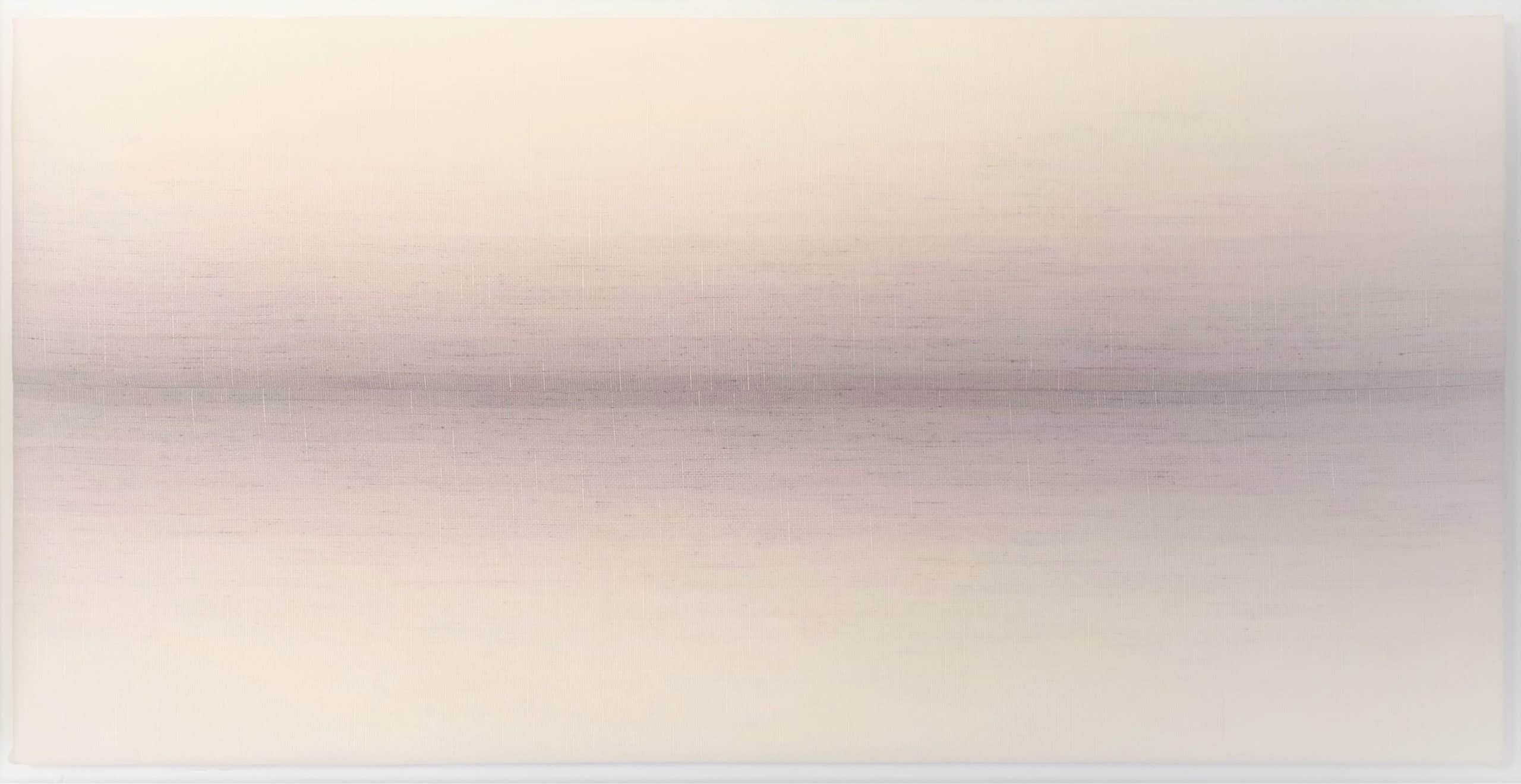
“Prairie Winter” by Hanna Yokozawa Farquharson, 2021.
What contemporary craftspeople or artists are you looking at right now? Who do you think our audience should know about? (From Saskatchewan or elsewhere!)
Let me begin by saying that I believe everyone is an artist and a creator. With that in mind, I am interested in anyone who is conscious of sound.
I am interested in those who are conscious of the sound they receive and express it in their own way through music, dance, writing, cooking, visual arts, service, smiling, and anything else they can think of.
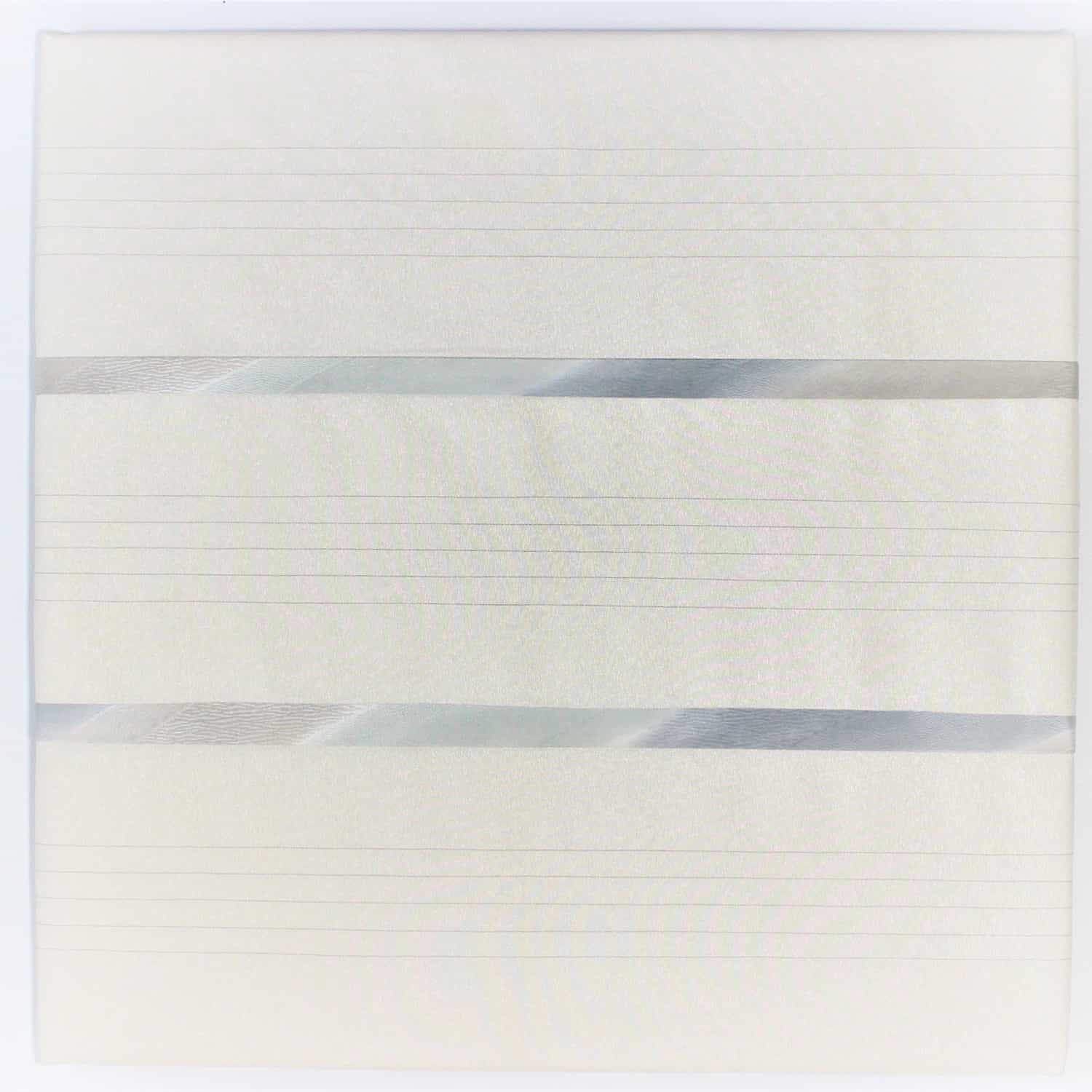
“Water” by Hanna Yokozawa Farquharson, 2021.
What kind of advice would you like to offer to other emerging craftspeople and makers who are reading this interview?
You may not be able to move forward thinking with your head.
I believe this is a planet where reality changes through action. Timing is everything, but if you take action, the scenery around you will change. All that remains is to decide to go with the flow.
—
You can find more information about Gaia Symphony at the SCC website, and see more examples of Hanna’s work at her website hannafarquharson.com

